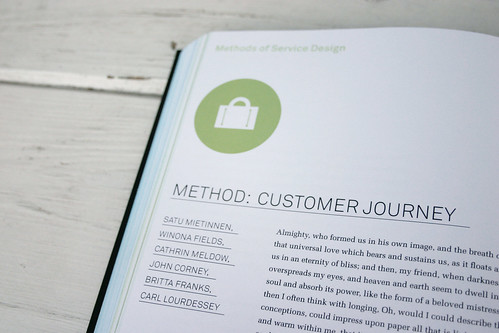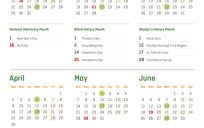“This is Service Design Thinking” by geschenkt
If Reading, Writing and Arithmetic are the skills of Literacy 1.0, surely Design Thinking (perhaps, applied, I’m talking about “Service Design”) is part of Literacy 2.0; at the very least, it’s a necessary scaffold to support Literacy 2.0. Each of us surely can identify failures to empathise with learners, leaders, employees, customers and, perhaps, “the other side” (whatever that might mean to you).
“Design is a discipline where the conception of subject matter, method, and purpose is an integral part of the activity and of the results.” – Richard Buchanan
Design, not merely “Instructional Design,” is about an intentional act specifically chosen to resolve a “problem.” Every manner of design runs the risk of being misapplied by people who look at their own experiences and make intentional decisions about “fixing problems” based on what might work for themselves.
This goes back to something Mr. Buchanan said a few weeks ago at COINs 2010, something akin to “The earth, as a vessel, travels around the sun once a year. Just because I have travelled around the sun sixty years doesn’t necessarily mean I understand anything about how the solar system works.”
We do this all the time. I do it, too. We assert assumptions about others based on our experiences, small as they are relative to the whole of the group (or the world).
From the ground up, we strive to set new patterns in motion of getting connected to each other, plugged in to the problems we care about and keep ourselves constructively engaged while remaining unsatisfied with the status quo. I constantly question if I really know everything I should know. I do this not because I lack confidence in myself; but because I’m fully confident that I’m human and thus I’m not going to get it all right; certainly not on the first try.
This is not meant to keep us from making progress; it’s meant to make good progress.
Changing the status quo in constructive, lasting ways is hard work. It is often not visible that there’s progress being made. I can share what it feels like from my perspecitve; that there is, in fact, momentum. Feeling that there is momentum, getting that feeling validated by others, is as much of a “spidey sense” for progress as you can get.
From the top-down, we need to habituate walking miles in everyone’s shoes: the people on our front lines; the people with whom we interact; the people with whom “they” connect. Our ability to empathize with others is what makes us better design thinkers. When we can share the same understanding of situations, we can organize, and there is where some real magic happens.
Organization is a mental framing we, as people, use to define how we connect with others. Community is what happens when that connectedness is not only mutual, but valued by all connected to and by the common cause.
Community is what we should be striving for. Building, nurturing and growing communities are the ways organizations will survive in this economic climate, and the only real chance organizations have to be around next year, let alone ten years from now.
We get Community right when we get empathy right. When that happens, we cease to figure out how to grow; we begin to solve, collectively, how to manage growth as more and more people you don’t know connect to you.





Leave a Reply
You must be logged in to post a comment.